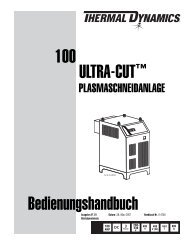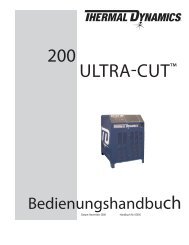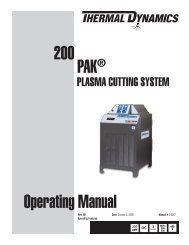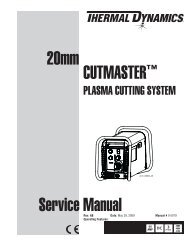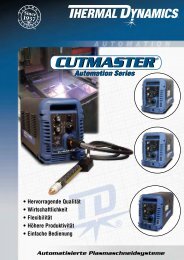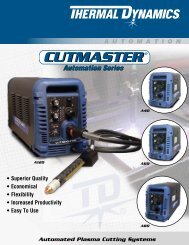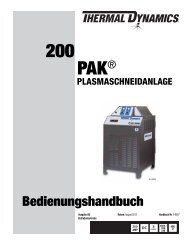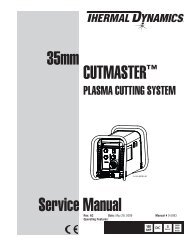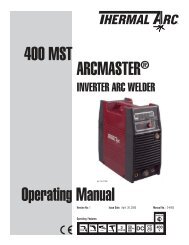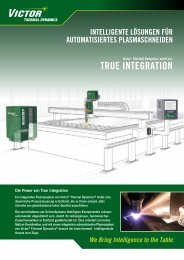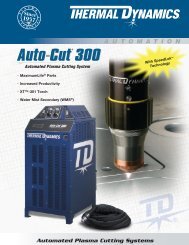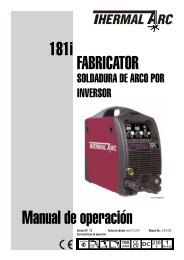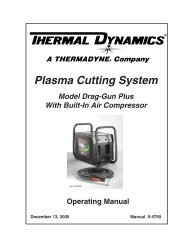211i Operating Manual FabricatOr® - Victor Technologies - Europe
211i Operating Manual FabricatOr® - Victor Technologies - Europe
211i Operating Manual FabricatOr® - Victor Technologies - Europe
You also want an ePaper? Increase the reach of your titles
YUMPU automatically turns print PDFs into web optimized ePapers that Google loves.
BASIC WELDING FABRICATOR <strong>211i</strong><br />
The easiest welding procedure for the beginner to experiment with MIG welding is the flat position. The<br />
equipment is capable of flat, vertical and overhead positions.<br />
For practicing MIG welding, secure some pieces of 16 gauge(1.6mm) or 18 gauge (1.2mm) mild steel plate<br />
150 x 150mm. Use 0.8mm flux cored gasless wire or a solid wire with shielding gas.<br />
Setting of the Power Source<br />
Power source setting requires some practice by the operator, as the welding plant has two control settings<br />
that have to balance. These are the Wirespeed control (refer to section 3.06.4) and the welding Voltage Control<br />
(refer to section 3.06.10). The welding current is determined by the Wirespeed control, the current will increase<br />
with increased Wirespeed, resulting in a shorter arc. Less wire speed will reduce the current and lengthen the<br />
arc. Increasing the welding voltage hardly alters the current level, but lengthens the arc. By decreasing the<br />
voltage, a shorter arc is obtained with a little change in current level.<br />
When changing to a different electrode wire diameter, different control settings are required. A thinner electrode<br />
wire needs more Wirespeed to achieve the same current level.<br />
A satisfactory weld cannot be obtained if the Wirespeed and Voltage settings are not adjusted to suit the<br />
electrode wire diameter and the dimensions of the work piece.<br />
If the Wirespeed is too high for the welding voltage, “stubbing” will occur as the wire dips into the molten<br />
pool and does not melt. Welding in these conditions normally produces a poor weld due to lack of fusion. If,<br />
however, the welding voltage is too high, large drops will form on the end of the wire, causing spatter. The<br />
correct setting of voltage and Wirespeed can be seen in the shape of the weld deposit and heard by a smooth<br />
regular arc sound. Refer to the Weld Guide located on the inside of the wirefeed compartment door for setup<br />
information.<br />
Electrode Wire Size Selection<br />
The choice of Electrode wire size and shielding gas used depends on the following<br />
• Thickness of the metal to be welded<br />
• Type of joint<br />
• Capacity of the wire feed unit and Power Source<br />
• The amount of penetration required<br />
• The deposition rate required<br />
• The bead profile desired<br />
• The position of welding<br />
• Cost of the wire<br />
<strong>Manual</strong> 0-5225 4-5 BASIC WELDING GUIDE



